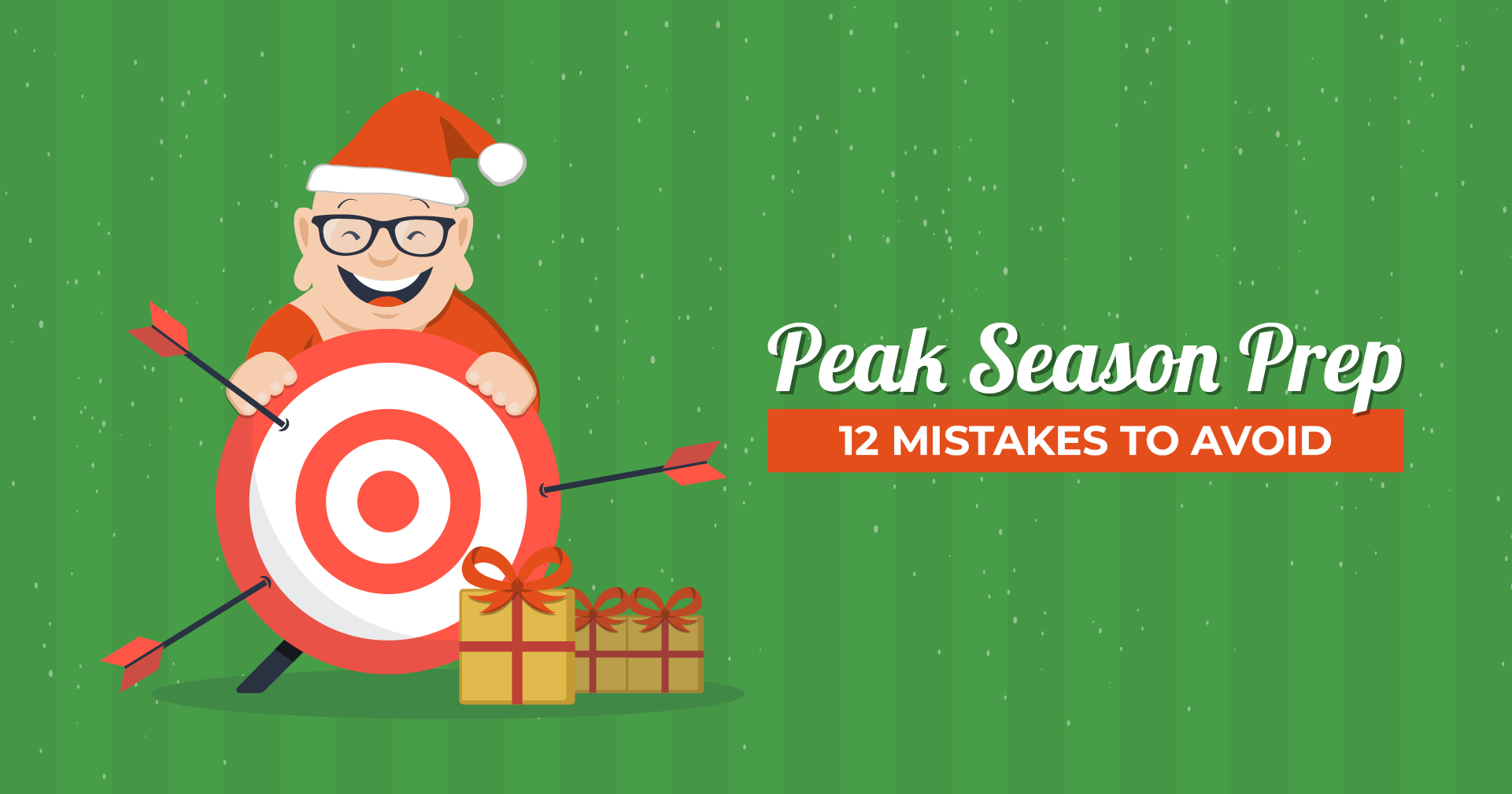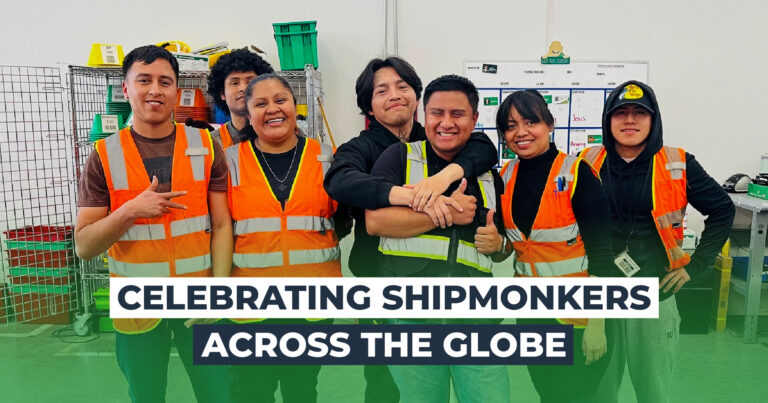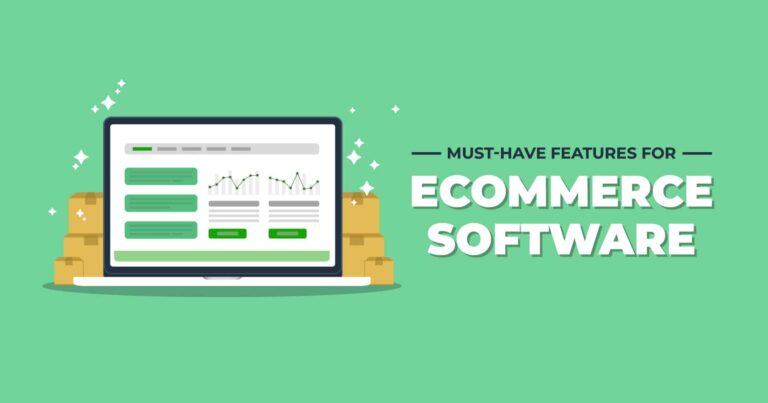Peak Season Prep: 12 Mistakes to Avoid
It’s crunch time! E-tailers and ecommerce brands are heading into the holiday season and we cannot stress enough the importance of planning, prepping and prognosticating (okay, forecasting). We’ve covered some of the basic planning for peak season already, so this article is going to focus on what not to do. We’ve rounded up the top 12 mistakes that ecommerce businesses make before, during and after Black Friday/Cyber Monday and all the way through the post-holiday return season. Let’s get started — the clock is ticking!
12 Peak Season Mistakes to Avoid
Some things, like pandemics, trucker strikes and snowstorms, can’t be avoided. But the kinds of mishaps we’re talking about are the self-induced user errors that could have been avoided if only you’d taken the proper steps ahead of time! Here are some of the worst things ecommerce businesses can do going into peak holiday season, and what you should be doing instead.
1. Not Enough Planning
Congrats! You’re already ahead of the game because you’re reading this. Start making a to-do list if you haven’t already. Your list should include demand forecasting, sales goals, marketing plans, pricing strategies for each SKU, setting KPIs, confirming supplier lead times, ordering products from suppliers or manufacturers, and notifying your fulfillment center or 3PL of promotions, anticipated sales volume and incoming shipments for receiving. You should also plan for any necessary updates to your website or fulfillment operations that need to happen before mid-November.
2. Website Issues
Nothing is worse than having your website crash on the biggest sales day of the year due to too much traffic. A close second is watching shoppers bounce or abandon carts due to slow-loading pages. Your website or online storefront should be optimized for mobile traffic, tested for potential problems, and in tip-top shape before your first promotion begins. At that point, all web development projects (other than emergencies) should cease until the holidays are over. There is only so much you can tackle, so concentrate on “needs” over “wants,” prioritize tasks by their impact on sales, and eliminate those that can’t be completed (and QA tested) in time.
3. Concentrating All Marketing on BF/CM
One way to spread traffic out and avoid being overwhelmed is to run your Black Friday/Cyber Monday promotions for longer than two days. Launch your Black Friday promotion on the Monday before, and run it for a week (or two). Consider running different specials every day in December, or on the twelve days of Christmas. Spreading out your promotions makes for a calmer holiday season, helps you reach the early birds and procrastinators, gives you time to react should something go wrong, and relieves the pressure on your fulfillment center or 3PL to fill all orders in 2 days.
4. Shotgun Marketing
Don’t just spray ads everywhere. Target your marketing spend on the places where you know your customers will be. Know which keywords and what types of promotions get the most engagement, and which channels bring in the most qualified consumers. How? By tracking the performance of every one of your paid search ads, emails, and social media ads. You should be doing this type of tracking and testing right now (and all year, really) so you can employ what you’ve learned during peak season. And don’t forget to utilize retargeting campaigns to reach customers who’ve previously purchased or shown interest in your brand.
5. Relying on a Single Sales Channel
At the same time, don’t think too narrowly. Today’s consumers are shopping everywhere, from social media platforms to marketplaces, to mobile apps, branded websites, and brick-and-mortar stores. There is no one place to reach them all. You’ll extend your reach if you offer multiple sales channels or, better yet, an omnichannel sales experience. Before adding a sales channel, however, make sure your 3PL or fulfillment center is prepared to handle multichannel fulfillment. You’ll need tech integrations and a single-source software platform that enables you to see and manage order and inventory data from all channels.

6. Lack of a Pricing Strategy
Setting a price for your product is stressful, especially if you’re selling on a competitive marketplace like Amazon. Start by making sure you know the landed cost of each item in your store — that is, the true cost of sourcing, importing, storing, picking, packing, and shipping it to a customer. You’ll need this number to establish the minimum price you’ll accept. Research your competitors’ prices, and continue to monitor prices throughout the holidays so you can react quickly.
Dynamic pricing tools can automatically adjust the set price on your branded website or within a marketplace to remain competitive with similar product listings elsewhere. They can also reprice items based on demand, a set of rules, or an algorithm of your choosing.
7. Poor Quality Data
You can’t track the performance of your marketing or make strategic last-minute decisions without accurate, real-time data. Marketing tools such as Google Analytics can track clicks, traffic sources, and website shopping behavior. Pricing analytics tools can help you determine competitive pricing and automate repricing when necessary. ShipMonk’s industry leading fulfillment platform offers real-time transparency for order tracking and inventory management, complete with dashboards, tracking tools, automated reporting and notifications.

8. Poor Product Descriptions or Photography
Don’t make your customers contact customer service or, worse, go elsewhere or to find basic information they need to know. Product descriptions should include your brand name, size or dimensions, weight, materials or ingredients used, fit, where it’s made, how to use it, why it’s better than similar products, and anything else you’d want to know before buying it yourself. They should also include keywords a customer might search to find that product. Product photography should show the product from all angles, represent colors accurately, be “zoomable,” and show the product in use so the customer has a clear idea of its scale.
9. Not Enough Inventory
Stockouts can and should be avoided at all costs. The short timespan and high shipping volume between Thanksgiving and Christmas will not work in your favor if you need to reorder inventory from a supplier. Know and monitor your supply chain lead times and stay ahead of any disruptions. Leverage historical data from previous years, segmented by month and by sales channel. Order earlier, if possible, to ensure merchandise is in place before the rush begins.
Demand forecasting solutions range from Excel spreadsheets to ERP systems for large retail enterprises with complex supply chains. The sooner you start collecting data the better. Choose an easy-to-use system that matches your size and budget, and integrates with your existing tech stack, suppliers and sales channels.
10. Too Much Inventory
Forecasting is never going to be 100% accurate. If sales aren’t meeting goals, have a backup plan in place, whether that means bundling products to raise average order value or lowering prices to move inventory. Excess inventory results in excess carrying costs, which eats away at your profit margin on those items. Also have a plan in place for clearing out unsold merchandise after the holidays, particularly goods with a limited life span.
11. Shipping Delays
It may not be your fault that a package was delayed, but there are things you can do to reduce the chances of that happening. There are two types of shipping you need to think about: freight shipping of incoming merchandise from your supplier to your fulfillment center, and orders shipped from your fulfillment center to your customers.
When it comes to incoming freight, plan conservatively, leaving plenty of time for delays, and keep your fulfillment center or 3PL in the loop. Better yet, let them take charge of freight shipping and inventory distribution for you. Take advantage of multiple warehouse locations, if your 3PL has them, to reduce shipping costs and give you a back-up in case one facility is slammed with a snowstorm. ShipMonk, for example, has 8 locations in the U.S., as well as Mexico, Canada, the UK and Europe. In addition, our Virtual Carrier Network automatically chooses the best shipping carrier, route and method for each order based on carrier capacity, reliability and price.
Lastly, don’t promise your customers that you can guarantee delivery by Christmas if you can’t. Give them realistic timelines and an exact cutoff time for orders to ensure Christmas deliveries.
12. Ghosting Your Customers
When something goes wrong, the worst thing you can do is ignore it. Instead, contact the affected customer and inform them of the reason for delay and what you’re doing about it. Most customers are understanding about shipping delays, but rapidly lose patience when they haven’t heard from you in a week. Brands that respond quickly to delays or problems earn points for effort that can defuse the situation. If the problem was your fault, such as a stockout you didn’t catch or the wrong item was shipped, own up to your mistake and offer solutions. Don’t stop until your customer is satisfied. Follow up in January on any inventory or fulfillment issues, and learn from your mistakes.
Need Help?
We hope these tips help you make the most of your holiday season. but if it’s all too overwhelming, help is here! With hundreds of ecommerce business clients on board, ShipMonk has seen it all. We’ve perfected the art of scaling up for peak season, and can help you with tech integrations, a robust yet user-friendly management system, and carrier agnostic discount shipping solutions. If this season doesn’t go as planned, contact us before Peak Season 2024 rolls around.



